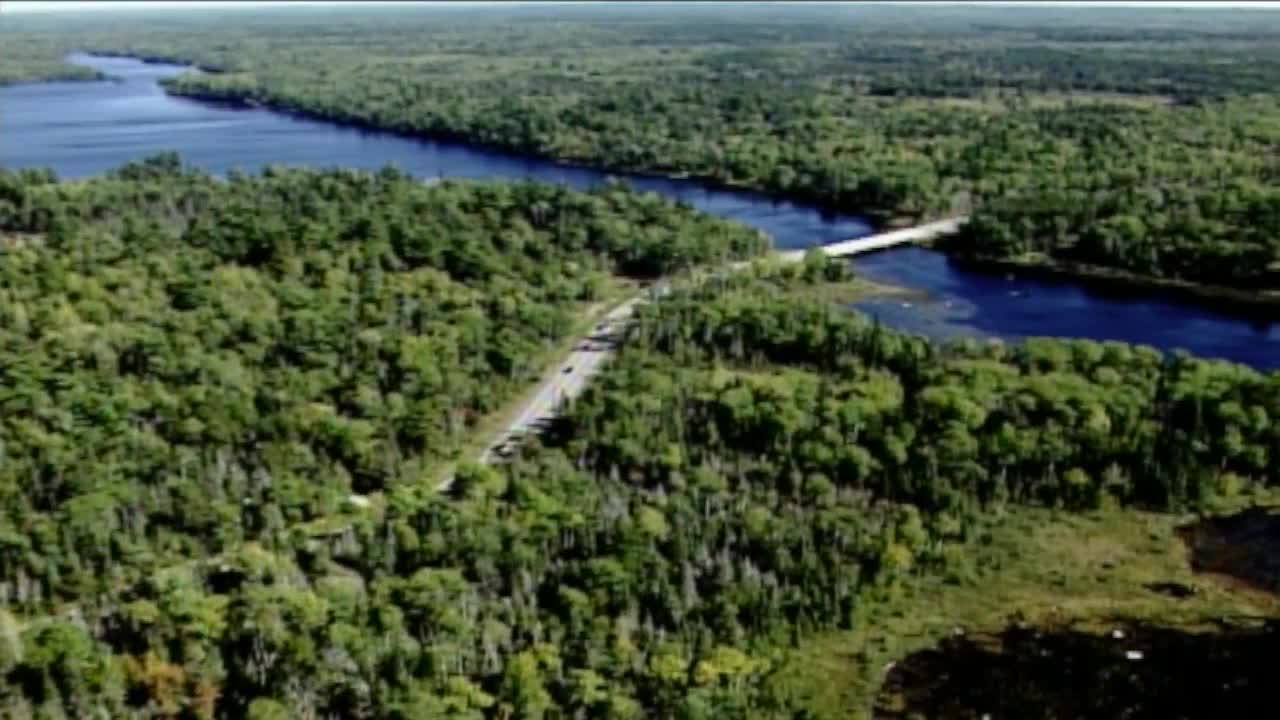Environmental group pushes back on Twin Metals-owned mining company’s exploratory plan near BWCA

Aerial view of the Boundary Waters Canoe Area Wilderness. (KSTP/file)
A mining company is expected to learn soon whether it can move forward with exploring mining non-ferrous metallic minerals in St. Louis County.
Franconia Minerals LLC, a subsidiary of Twin Metals Minnesota LLC, which is owned by Chilean mining company Antofagasta PLC, submitted its exploration plan to the Minnesota Department of Natural Resources (DNR) on Sept. 22.
The land in Franconia’s exploration plan includes Birch Lake in the Superior National Forest, which drains into the Kawishiwi River and connects with the Boundary Waters Canoe Area Wilderness less than 30 miles away.
The proposed location sits next to the shuttered Dunka Mine, which has been out of commission for almost 30 years, according to the DNR.
The plan outlines Franconia’s proposal to put exploratory borings near Babbitt, Minn., containing at least six drill pads, half of which would be located within the drainage of Birch Lake, and the other half along the shoreline of Birch Lake in the Rainy River-Headwaters watershed, according to the exploration plan.
Additionally, Franconia’s plan includes two drill pads that were not required to be in the plan because they don’t involve leased state minerals or state surface lands. The surface and mineral ownership of those two pads are private, according to a spokesperson for the DNR.
The DNR has 20 days to respond to the plan with any changes or conditions. However, prior to the deadline, the agency notified Franconia that they would be taking an additional two weeks to respond.
On Oct. 9, the Northeastern Minnesotans for Wilderness (NMW), an organization with a stated mission of ensuring permanent protection for the wilderness from sulfide-ore copper mining, sent a letter to officials with the Minnesota Pollution Control Agency (MPCA) and the DNR urging authorities to not consider Franconia’s plan.

NMW officials say the proposal shouldn’t be considered at all in light of a pending Minnesota Environmental Rights Act (MERA) lawsuit from the NMW alleging that Minnesota’s nonferrous mining rules are not enough to protect the BWCA.
“We feel that due to ongoing litigation and evidence of water quality issues in the Birch Lake area, we don’t think it makes sense to allow further mining on this land,” said Libby London, a spokesperson for NMW.
5 EYEWITNESS NEWS has reached out to Twin Metals for a statement or comment for this story and is awaiting a response.
In May, officials with the DNR filed a procedural order that stated that current Minnesota regulations on light and noise pollution are not adequate to protect the BWCA from non-ferrous mineral mining activity.
In response to the DNR’s procedural order, Franconia Minerals challenged the DNR’s decision and requested a contested case hearing — a trial before an administrative law judge. If that judge finds that Minnesota’s non-ferrous mining rules are not enough to protect the BWCA, the DNR will move forward with a formal plan to amend state regulations, according to a spokesperson for NMW.
The entire process is longwinded, said Becky Rom, the national chair of Campaign to Save the Boundary Waters.
In the letter to the MPCA and DNR authored by Matt Norton, a policy and science director with NMW, Norton said, “The purpose of Franconia’s exploratory drilling plan is to utilize state mineral leases to advance the development of a sulfide-ore copper mine within the Rainy River Headwaters watershed, directly beneath Birch Lake.”
A spokesperson for the DNR said the agency is expected to get back to Franconia Minerals with comments on the exploration plan by the end of this week.
RELATED: Federal judge dismisses Twin Metals copper-nickel mine lawsuit for failure to meet requirements
RELATED: US Interior secretary’s order curbs future of Twin Metals mine project
RELATED: Court of Appeals upholds challenge to adequacy of mining rules near Boundary Waters
Editor’s note: this story has been updated to reflect that the proposed exploration plan is for exploratory borings at 6 drill pads, and does not include a proposed metallic mineral mine.